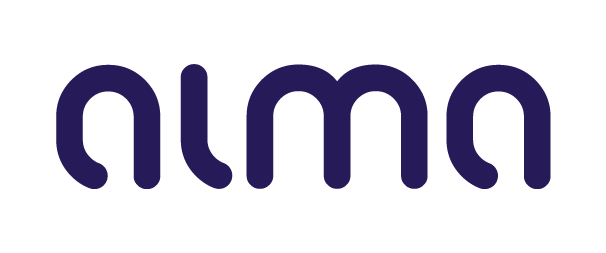The Alma CEO takes on the role after working on the brand for more than 30 years
By Jameson Fleming. Published April 13, 2022. Credit: Adweek
McDonald’s last won advertiser of the year at Cannes in 2014. As DDB‘s new global CCO for the client, Luis Miguel Messianu has a lofty—but clear—goal: win the honor again by 2025.
Messianu acknowledged awards aren’t what matter most—effective creative does—but taking that top honor would signify the direction he and global CMO Morgan Flatley want to take McDonald’s marketing.
“Morgan talks about how she wants ideas that are braver because they believe that when McDonald’s gets it right, they’re actually moving culture,” said Dave Kissel, DDB’s global business lead. Kissel has worked on the McDonald’s account at DDB for 18 years. “It has an exponential kind of impact on the business.”
Messianu is DDB’s first global chief creative for the brand, which the agency has counted as a client for some 70 years. Messianu has worked on McDonald’s for nearly half of that through other agencies, even helping to introduce McDonald’s to Mexico in the 1980s. For the last 27 years, he’s worked with the brand as the founder and CEO of Alma, a Miami-based multicultural agency. In his new role, he’ll split his time 50-50 between Alma, of which DDB became an investor in 2001, and overseeing DDB’s creative for McDonald’s in 46 markets. The agency elevated the creative to this role without client input, Kissel told Adweek, because the agency trusted the strength of the relationship and knew the appointment would leave McDonald’s “ecstatic.”
“Our tenure with Alma is unheard of across the industry, particularly in the fast-moving QSR category,” Flatley said in a statement. “Luis Miguel has played no small part in instilling and fanning this tenacity and passion for our business.”
Leading the next era of McDonald’s creative
As the different forms of media evolve over time, there’s one thing that’s clear to Messianu.
“We need to be closer to consumers’ hearts,” Messianu said, adding the goal is the same whether for the metaverse, a print ad or a TV campaign. “The DNA and personality of the brand is so special that no matter where it shows up, it’s about making a connection.”
His focus is on emotional storytelling, which he said McDonald’s is a master of. In Messianu’s eyes, it’s a key to building the brand over time.
“[Emotional storytelling] has become a trademark of our work at Alma,” Messianu said. “It started with McDonald’s, and we’ve been able to apply it to other clients, with each brand having its own personality.”
From his 30+ years working with McDonald’s, Messianu pointed to several pieces of work that best illustrate the client’s commitment to spots that connect with consumers at a deeper level:
- “First Word” features a father trying to get his son to say “Papa.” It’s not until the father shows his son a bag of McDonald’s that he hears the magic words.
- “Man-to-Man” shows what happens when a father misunderstands his son’s request to learn about sex.
- “First Customer” follows a teenager working his first day of the drive-thru. His parents are his first customers, who, predictably, are very excited about the moment.
- “Old Timers” shares the story of a group of McDonald’s customers with the same morning ritual that dates back decades. But when Covid-19 interrupted their morning gatherings there, the restaurant accommodated them outdoors
A scorecard for bravery
As one of the largest advertisers in the world, McDonald’s fully believes in the power of its marketing, but it needs that investment to deliver maximum ROI, Kissel said.
“The big unlock—spoiler alert—is creativity,” Kissel added. To get those pieces of game-changing creative, McDonald’s and DDB are aligned on one motto: good is the enemy of great. And to get to great, the marketing has to be brave.
DDB is setting up a framework across the different markets it covers to establish ground rules for pushing its limits on creativity. Messianu equates this scorecard to a tennis court. The best players in the world are able to drop shots in as close to the lines as they can to make their volleys as effective as possible. Messianu wants DDB to approach creativity the same way: create work that lands at the edges of what is comfortable.
When the caliber of work is elevated, the client’s media dollars go further. “Be brave enough to save money on your media spending because the work is so intriguing, so relevant, so shareable that people will do it on our behalf,” Messianu said.
Making McDonald’s more sustainable
McDonald’s has executed several sustainability-focused initiatives with the help of DDB, including creating the largest network of electric vehicle chargers in Sweden. And more recently, an OOH campaign in Norway with messaging that encourages consumers to stop littering and also provides trash bins in public places.
But a brand’s footprint far exceeds consumer behavior. According to a 2021 report, McDonald’s carbon footprint sits at 53 million metric tons of carbon per year—more emissions than the entire country of Norway. More and more, agencies are being asked to do more than just communicate messaging around sustainability, but get their hands dirty creating more sustainable packaging or evaluating supply chains to make them less wasteful.
To that end, Kissel said DDB has “multiple things in the works” that it can’t reveal yet that will tackle bigger picture issues for the client.
“They were kind of ‘aha’ moments that came between the agency and the client about things that we can do that will contribute in a positive way to to the environment,” Kissel said.
Messianu and Kissel pointed to its extension of Wieden+Kennedy’s “Famous Orders” campaign, when Alma tapped J. Balvin for his special order and music video. “Where it really starts to go off the charts is if you have a killer creative idea that catches the imagination of the public,” Kissel said. “It actually not just lives in culture, but it starts to move culture.”


